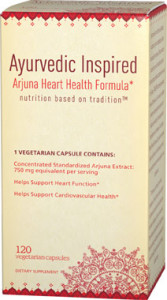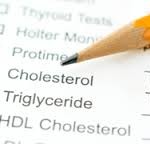 People who have a total cholesterol over 240 are rated at high risk for heart disease and stroke. They will typically have twice the risk of coronary heart disease as people whose level is desirable. At this level, depending upon your other levels – LDL, HDL and triglyercides – you must make changes to your diet, weight and exercise habits. Have your cholesterol level rechecked and if you haven’t been able to reduce your levels you may want to talk with your doctor about cholesterol lowering drugs.
People who have a total cholesterol over 240 are rated at high risk for heart disease and stroke. They will typically have twice the risk of coronary heart disease as people whose level is desirable. At this level, depending upon your other levels – LDL, HDL and triglyercides – you must make changes to your diet, weight and exercise habits. Have your cholesterol level rechecked and if you haven’t been able to reduce your levels you may want to talk with your doctor about cholesterol lowering drugs.
Your HDL cholesterol should be high – the higher the better. Having a low HDL – less than 40 for men and 50 for women – puts you at higher risk for heart disease. Your HDL level will decrease if you are overweight, sedentary or smoke. People with high triglycerides usually also have low HDL cholesterol.
The LDL or bad cholesterol is an important number to understand your cholesterol and triglyceride values. When you lower your LDL you’ll lower your risk of heart attack and stroke. Some labs will use different values but in general an LDL of less than 100 is optimal, 100-129 is above optimal, 130-159 is borderline high, 160-189 is high and anything over 190 is very high and dangerous. Doctors will also consider your other risks for heart disease and stroke to determine where your LDL should be optimally for you. Your healthy level may not be healthy for your friend or your spouse. Talk with your doctor and get an explanation about what criteria has gone into the decisions for your healthy numbers.
Triglyceride is a form of fat that is found in the blood. People with high triglyceride levels usually have high total cholesterol values too. Normal levels for triglycerides are less than 150; borderline high is 150-199; high is 200-499 and very high is over 500. People with high triglyceride levels are usually obese, physically inactive, smoke or drink an excessive amount of alcohol. A high triglyceride level is also a predictive value for diabetes. Those with a high triglyceride value are at much greater risk to develop diabetes than those whose value is close to normal.
Resources:
American Heart Association: What Your Cholesterol Levels Mean
American Heart Association: Good vs. Bad Cholesterol
American Heart Association: Understanding and Managing Your Triglycerides
http://www.acponline.org/patients_families/pdfs/health/tri.pdf
MedlinePlus: Understanding Cholesterol Results
http://www.nlm.nih.gov/medlineplus/ency/patientinstructions/000386.htm
MayoClinic: Cholesterol Test
http://www.mayoclinic.com/health/cholesterol-test/MY00500/DSECTION=results
MayoClinic: High Cholesterol
http://www.mayoclinic.com/health/cholesterol-levels/CL00001
Sutter Health: Understaning Cholesterol
http://www.cpmc.org/learning/documents/cholesterol-ws.html
BCBS Nebraska: Managing Cholesterol
http://wellness.unl.edu/wellness_documents/managing_cholesterol.pdf
Harvard Health Publication: Understanding Cholesterol
http://www.health.harvard.edu/newsweek/Understanding_Cholesterol.htm
Marks Daily Apple: How to Interpret Cholesterol Test Results
http://www.marksdailyapple.com/how-to-interpret-cholesterol-test-results/#axzz2oYBAiG5A
| Advertisement | |
 |
|


Leave a Reply